I am a self-declared Singaporean foodie, but when I was assigned this article, I will admit that I had difficulty answering, “Why Filipino Food Is Worth Travelling For.” Since I myself had never tried Filipino cuisine before, who was I to answer the question? Moreover, this was due to the general difficulty of finding Filipino restaurants in Singapore — especially in comparison to other Southeast Asian cuisines like Thai and Vietnamese.
Luckily, researching brought me to a family-friendly Filipino restaurant chain that thankfully, has an outlet in Singapore. I ordered their best-selling dishes, or rather, what Filipinos regard as symbolic of the cuisine and culture. Equipped with a more well-rounded palate after tasting the likes of adobo, lechon, and sinigang, I had the honour of interviewing Johanne Siy, an award-winning Filipino chef based in Singapore. Thanks to her culinary expertise, she had plenty of insight to answer why Filipino food is truly worth travelling for.
First, a little bit about Chef Johanne
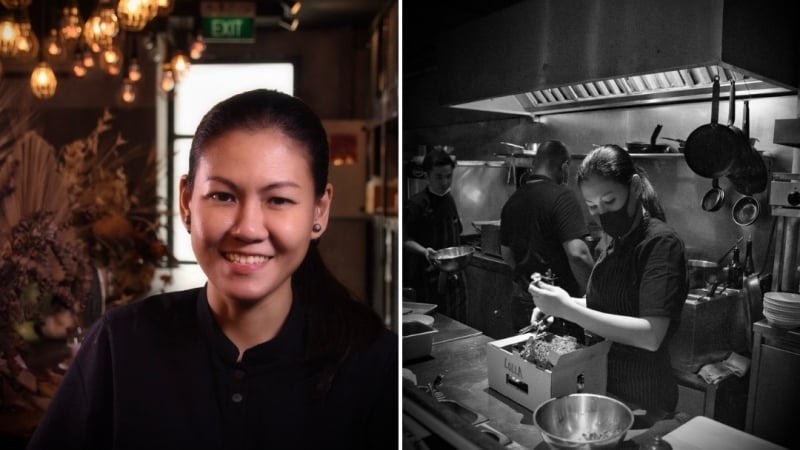
Image credit: Johanne Siy
The head chef at Lolla in Ann Siang Hill, Chef Johanne began her career not as a cook, but as a corporate brand manager for P&G. In 2010, she made the 180-degree switch to join the culinary world, and travelled to New York and Europe to further her passion.
Since leading the culinary team at Lolla only began in early 2020, it’s truly remarkable that she earned the Chef of the Year by the World Gourmet Awards in 2021!
A Singaporean’s introduction to Filipino cuisine
For anyone who has yet to try Filipino food, the best way to describe it is to think of sour and savoury flavours with dishes that truly pack a punch in terms of flavour.
Sinigang: similar to tom yam soup
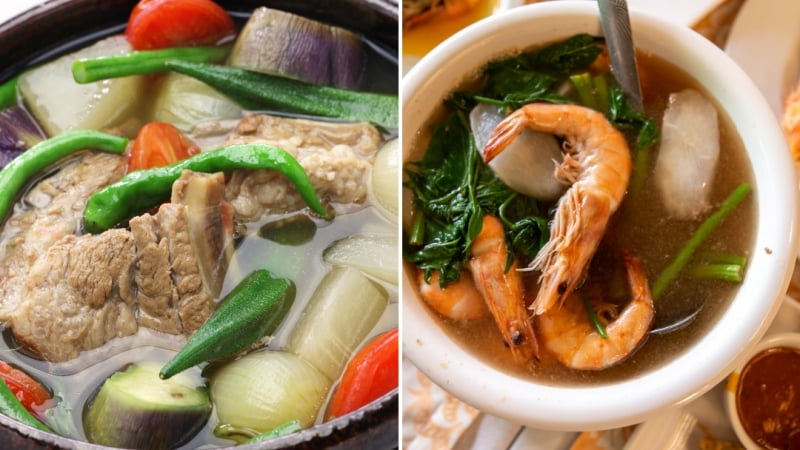
Image credit (L-R): bonchan; bugking88 via Canva Pro
Take sinigang, a Filipino soup characterised by its sour and savoury taste. For anyone who enjoys a piping hot bowl of tom yam soup when eating Thai food, sinigang has that same satisfying kick. The only difference is that the kick doesn’t come from its spice (as there is none in sinigang), but from the intense tartness. Put simply, it makes for a wonderful hangover cure or a hearty perk-me-up.
“As you travel further [into the Philippines], you’ll find different variations of the same dish,” notes Chef Johanne. In the case of sinigang, different regions use a variety of what are known as souring agents, wherein some use tamarind, while others use guava or vinegar. On that note, the choice of protein also depends on what’s most accessible within that region. For instance, in coastal towns, shrimp or fish is the choice of protein, while inland towns would opt for pork or chicken instead.
Filipino food represents the Philippines’ regional diversity
This brings me to a statement made by Chef Johanne which stood out to me the most: “Filipino food doesn’t focus on a dish per se, [but is more about] the method of cooking used, as well as the ingredients which are readily available to you.” And boy, does the Philippines brim with ingredients that truly bring gastronomic specialities to life!

Image credit: lorenz narbs
Chef Johanne reminisces days spent in her coastal hometown of Dagupan, where living five minutes away from the beach would mean that fresh seafood is abundant. We’re all familiar with perhaps the most iconic dish of Filipino cuisine, adobo: But, did you know that it doesn’t always have to be prepared with chicken or pork? “I’ve come across someone who made oyster adobo (or adobong talaba) before”, recounted Chef Johanne. “So, even though the basic ingredients of adobo are the same, like garlic, soy sauce, and vinegar, it’s all about the way of cooking” that defines Filipino cuisine.

Image credit: alexeykornylyev via Canva Pro
“Pangasinan, which lies to the north of Manila, translates to ‘Where Salting Is Done’,” Chef Johanne mentions. “The name was derived from [the province’s] fishing culture and [its] preservation techniques of seafood.” It’s no surprise, therefore, that Pangasinan is one of the country’s top producers of salt and is known for its savoury amalgamation of dishes.
In beachside towns like these, another popular dish is kinilaw, aka Philippine ceviche. Much like the Latin American dish, kinilaw consists of raw seafood prepared with a smorgasbord of flavours from calamansi, onion, ginger, salt, and pepper.
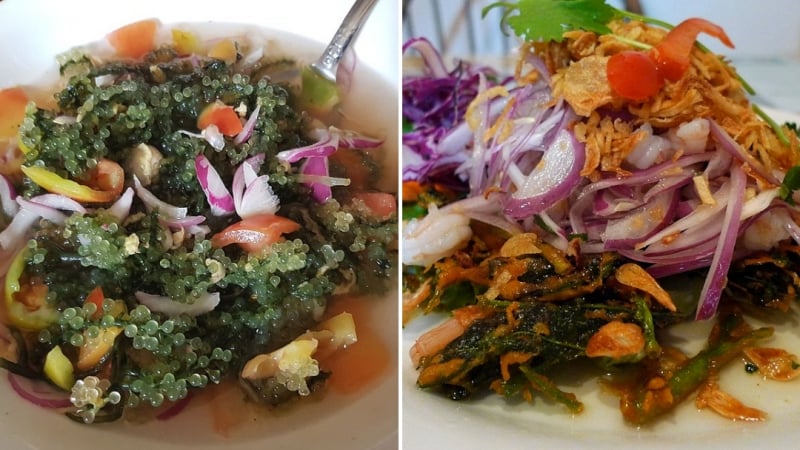
Image credit (L-R): Obsidian Soul; Arnold Gatilao
“The distinguishing feature between the two is that while the Latin American version is citrusy, the souring agent of kinilaw is vinegar,” states Chef Johanne. Also, in keeping with the theme of regional specialties, “…different regions use different vinegars — such as cane, coconut, and palm.” That being said, “kinilaw is a vibrant and fresh dish [that offers] a good way to experience local seafood.”
On the other hand, inland provinces are more well-known for their coconut milk and land produce like chicken and fish. In areas like these, dishes are prepared “with creamy and indulgent flavours,” notes Chef Johanne.
Getting acquainted with Filipino food is a taste of others’ home
That being said, when tasting food from an unfamiliar cuisine, the easiest way to get acquainted with it is to taste dishes that are reminiscent of what we have at home.
Sisig: Similar to chai poh and bak chor mee
As a Singaporean, the closest comparison I sampled was sisig, a Filipino dish of minced pork and chicken marinated with calamansi, onions, and chili peppers. Fun fact: The pork and chicken used in this dish aren’t the leaner cuts, but actually consist of the pig’s face and belly and chicken liver!
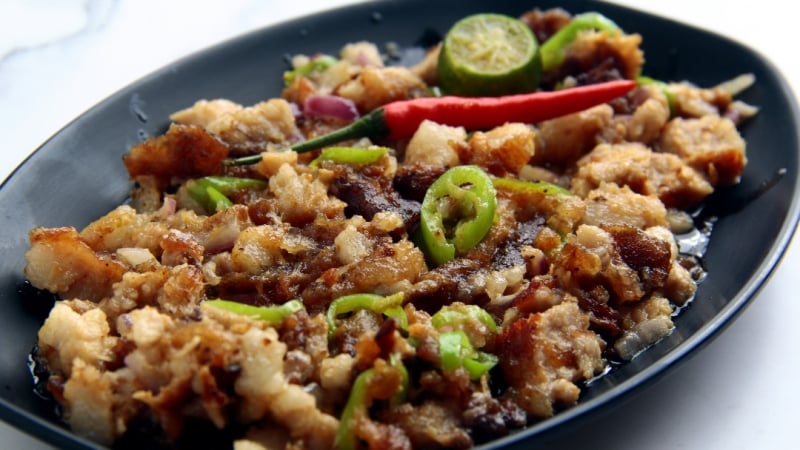
Image credit: junpinzon via Canva Pro
Before digging in, don’t forget to squeeze calamansi juice on top, and enjoy the medley of savoury, spicy, and sour — without any hint of gaminess at all! The textural variety was a lovely complement too: Along with juicy bits of meat, there were crunchy components (assumedly from the pork skin), which made the overall dish really enjoyable.
The chai poh (preserved radish) that we find on chwee kueh (steamed rice cake) — a breakfast dish of Teochew origin — has a similar flavour and textural profile to sisig. Moreover, if you’re having bak chor mee (minced pork egg noodles) or zhajiangmian (ground pork handmade noodles), the idea of sisig mimics the minced meat component of these two noodle dishes.
Lechon: the Philippines’ roasted suckling pig
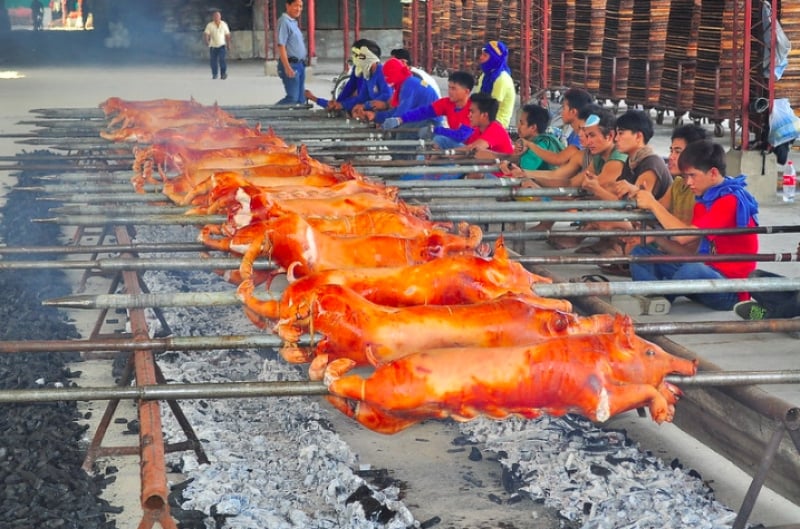
Image credit: whologwhy
Even though it has been a while since we’ve had family reunion dinners at Chinese restaurants with the suckling pig as the highlight of the meal, I’m sure we remember how much of a spectacle it was for the eyes and taste buds.
Thus, lechon presents itself as “a good introduction to Filipino cuisine. Besides, who doesn’t like crispy pork crackling?” Chef Johanne remarks. In the Philippines, lechon is typically served with pancit (a Filipino noodle dish), lumpia (spring rolls, both fried and fresh), and most commonly — rice. Across Southeast Asia, there’s one thing we can all agree on: No meal is complete without a serving of rice.
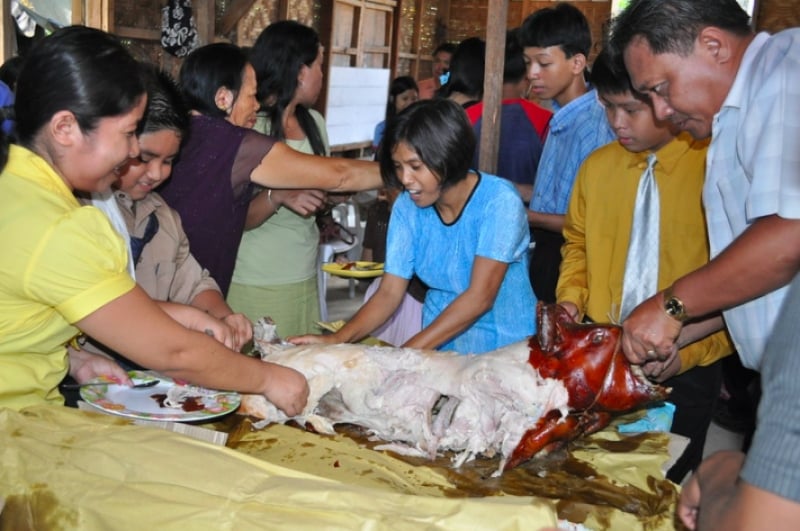
Image credit: whologwhy
The most important accompaniment, however, is its dark dipping sauce; in the case of lechon, it’s a thick and rich liver sauce consisting of sugar, fresh herbs, and vinegar. Lechon is a favourite at festive events like weddings and Christmas. So, much like when we eat it in Singapore, a celebratory occasion is marked with feasting on suckling pig!
Similarly, even though suckling pig features as a dish in Chinese, Italian, German, and Balinese cuisine, it’s all about the “way it’s cooked and the spices used,” quips Chef Johanne.
Kare-kare: a curry-like dish without the spice
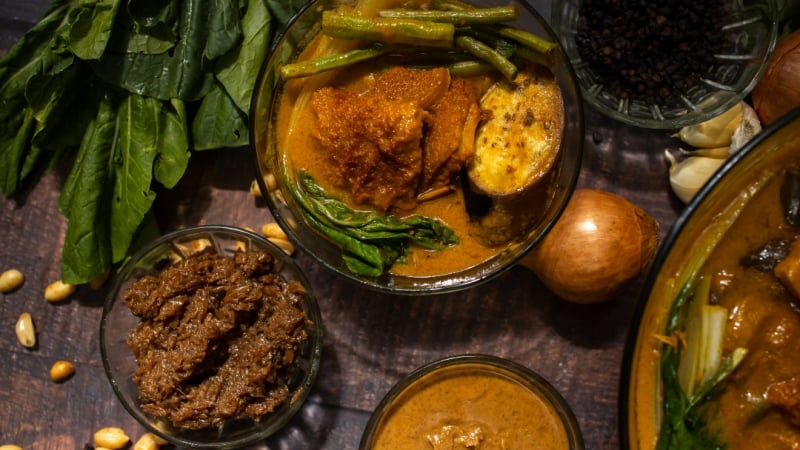
Image credit: Paul Ricafrente via Canva Pro
A thick Philippine stew of a savoury peanut sauce, kare-kare reminds me of a cross between pumpkin soup and the chicken curries I would have in Singapore. For anyone who’s trying it for the first time, it’s truly a unique dish; it consists of various cuts of poultry like oxtail, pig trotters, and beef tripe, while the stew itself tends towards the sweeter side. The peanuts lend the sweet and earthy flavours, while the combination of poultry and coconut milk contribute to the richness of the dish.
If you think the stew is slightly under seasoned, that’s the way the dish is actually supposed to taste. That is why kare-kare is usually served with bagoong, i.e. the Philippine version of fish paste, or sambal belachan. Simply add a tiny bit of bagoong to every bite of kare-kare that you have; you’ll surely be wow-ed by how the shrimpy and spicy bagoong “cuts across the richness of the coconut” and takes the flavour of the stew to a whole new level.
Halo-halo: taro milk tea meets chendol
If you love the delightful creaminess of taro milk tea and chendol, you’re sure to love halo-halo! Think of the milkiness, shaved ice, and myriad of ingredients in chendol, but with the ice creamy goodness reminiscent of taro milk tea.
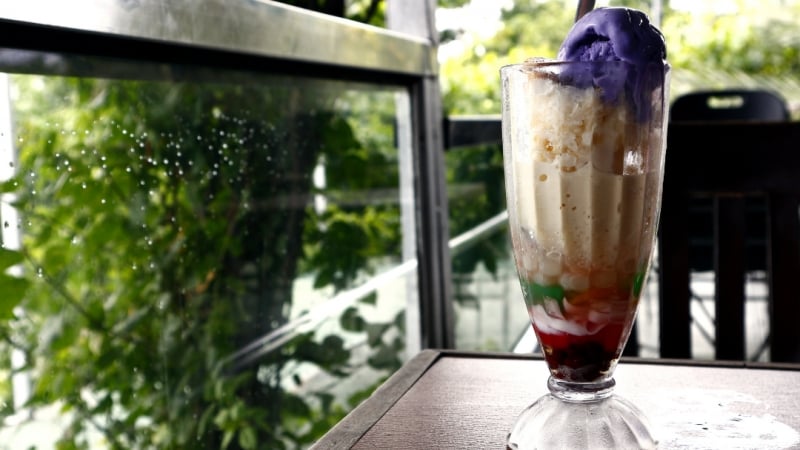
Image credit: junpinzon via Canva Pro
As a sweet tooth gal, halo-halo was my personal favorite. Apart from its tantalisingly refreshing quality perfect for the warm weather, the symphony of textural differences was an absolute delight of its own. Halo-halo — which translates to “mix-mix” in Tagalog — consists of crushed ice, evaporated or condensed milk, ube ice cream, and a range of ingredients: red beans, sweet corn, sago, taro cubes, fruit preserves, and flan.
So, after you “mix-mix” everything together, enjoy your dessert of crunchy, soft, and jelly-like textures. Once the ice begins to melt, it becomes a creamy and delectable beverage that you can sip on!
Filipino cuisine brings us closer to the fun that awaits in the Philippines
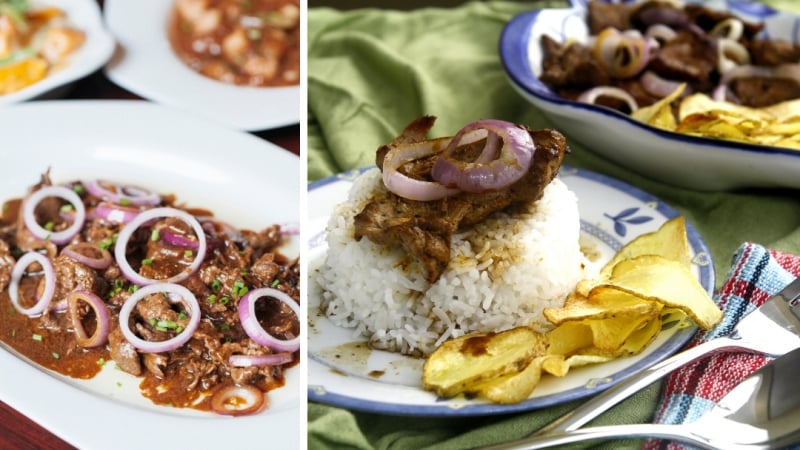
Image credit (L-R): iragiorgetti; junpinzon via Canva Pro
Sometimes, when Chef Johanne feels a little homesick, she’ll opt to cook Filipino food instead of dining out. Her go-to would be “comforting dishes that are usually easier to prepare, which usually consist of only three to four ingredients. A favourite of [hers] is bistek tagalog, which only requires thin beef slices, calamansi, chilli, and plenty of onions. Adobo is also an easy dish to prepare, with just a few ingredients that come together depending on how you prepare it.”
You may be thinking, why not just head to a Filipino restaurant in Singapore to get a taste of Filipino food? While this remains an option, Chef Johanne comments that “aside from Lucky Plaza and Paya Lebar as the go-to for Filipino food, there are no truly authentic Filipino restaurants in Singapore.”
(However, Chef Johanne recommends Algeria Singapore, a Filipino-Latin restaurant that boasts “quite a few similarities with Filipino cuisine”. Besides, it’s rare to come across a fusion restaurant of this nature in Singapore.)
So, why is Filipino food worth travelling for?
I started this article with a question and ended up immersed in a truly meaningful exchange about home and cultural identity hinged on local cuisine. So why exactly is Filipino food worth travelling for?
“You can’t try authentic Filipino food in the way it was intended to taste if you don’t have access to certain ingredients. For example, just changing the brand of soy sauce changes the taste of the dish.” In response to this, Chef Johanne and I shared a sentiment that “something will just feel off about the dish, as if something important is missing.”

Image credit: Louise Burton
“When in the Philippines, be sure to travel beyond Manila.” Chef Johanne reminds us not to miss the beauty in “the provinces, islands, beaches, and nature trails, where you’ll come across warm and hospitable locals who are passionate about their food and heritage.”
Chef Johanne offers another pro tip: “Having a host helps to navigate your way around the Philippines, as you’ll get invited to a Sunday lunch at ancestral homes. Nothing beats family recipes that have been passed down for generations, as well as eating food that can’t be found anywhere else.”
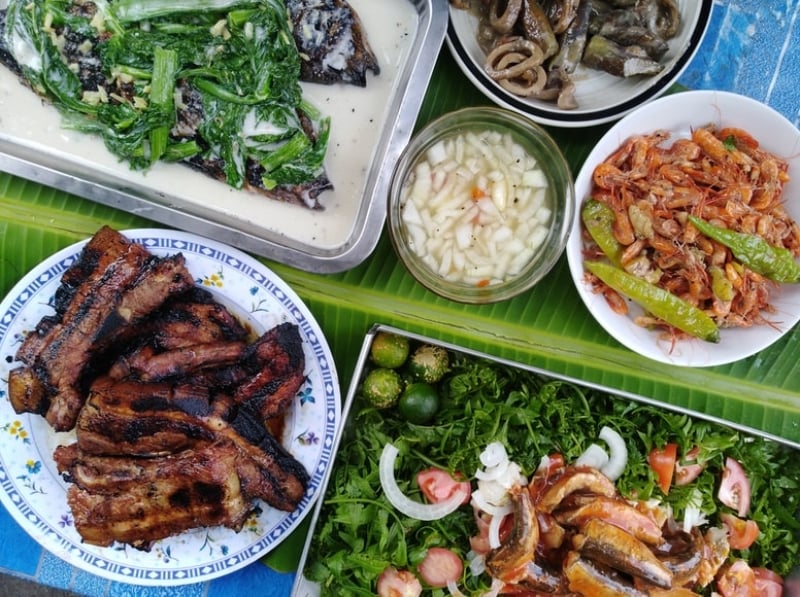
Image credit: Christian Paul Placino
Most importantly, Chef Johanne thinks that travelling to the Philippines is the best way to “debunk the misconception of exotic foods like balut and tripe stew, which are usually negatively portrayed on reality shows like Fear Factor. More than anything, it’s about understanding that there is more to Filipino cuisine than what is perceived as unappetising.”
So, to answer the question: Is Filipino food worth travelling for? My answer is “yes,” and I can’t wait till I get the opportunity to. Besides, wouldn’t you agree that the best way to get to know a culture is through its food?
TPB and TripZilla would like to thank Chef Johanne Siy for her time and wisdom.




